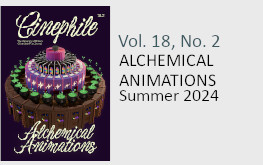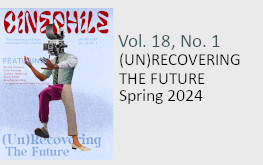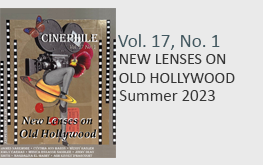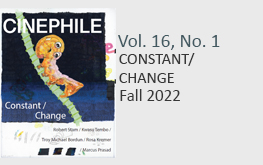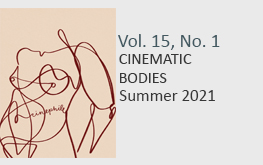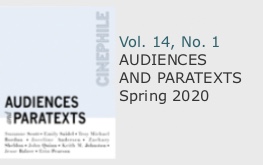R. Colin Tait
Hello Ladies and Gentleman, Boys and Girls. My name is Jimmy Breslin. I’m a writer. I write about New York, the city of my birth where I’ve lived and worked all my life. The city that I love and hate both equally. Today things are much different. Business is booming up, up and up. Crime is down, down, down. Homicides are the lowest it’s been since 1961. Well it wasn’t always like this. This film is about a different time. A different place. The good old days. The hot, blistering summer of 1977. There are eight million stories in the naked city and this was one of them.
– Jimmy Breslin, Summer of Sam
Why, in the 1990s, did so many films obsess over and imitate distinctly 1970s film style, iconography, and content? A cycle of films, including Casino (Martin Scorsese, 1995), Boogie Nights (Paul Thomas Anderson, 1997), The Ice Storm (Ang Lee, 1997), The Last Days of Disco (Walt Stillman, 1998), 54 (Mark Christopher, 1998), Fear and Loathing in Las Vegas (Terry Gilliam, 1998), and The Virgin Suicides (Sofia Coppola, 1999), obsessively recreated the ‘bad objects’ of Americana-drugs, gambling, pornography, serial-killing, and bankrupt cities-within the urban spaces of the 1970s. This cycle continued into the 2000s with Almost Famous (Cameron Crowe, 2000), Blow (Ted Demme, 2001), and more recently, Zodiac (David Fincher, 2007) and American Gangster (Ridley Scott, 2007). All of these works privileged the 1970s as a lost object of desire, as opposed to earlier nostalgic representations like American Graffiti (George Lucas, 1973) and its TV cousin, Happy Days (Garry Marshall 1974-1984), which longed for the innocence of pre-Vietnam, Eisenhower-esque small-town America. Thus, the evocation of the ‘good old/bad old days’ dichotomy warrants that we wade deeply into this murky phenomenon to explain its historical significance, its narrative logic, as well as exactly what this specific brand of nostalgia is trying to express. Spike Lee’s Summer of Sam (1999) provides an excellent case study of how this trend plays out, in a scene that presents a dazzling display of 70s iconography choreographed to The Who’s “Baba O’Riley/Teenage Wasteland.”[1] Not only does the scene absorb the logic of the music video and summarize the film, but it also presents a personalized rendition of the era, which we can deconstruct to get to the root of this nostalgia.
That Spike Lee’s generation of filmmakers came of age in the 1970s might begin to explain their peculiar longing for that decade. Similar to the directors of the Hollywood renaissance before them, the so-called “Rebels on the Backlot” (see Waxman) modelled themselves after the directors and films they watched during their formative years. As deWaard argues, these artists (and Spike Lee in particular) emulated a personal form of filmmaking while branding themselves within in a highly-competitive marketplace. This ciné-literate generation of artists found themselves imitating American icons like Martin Scorsese and setting their scenes to the soundtracks of their youth. One of the hallmarks of this nostalgic practice remains the ‘1970s Sequence’, which filmmakers as diverse as Richard Linklater, Steven Soderbergh, Quentin Tarantino, Wes Anderson, P.T. Anderson, Todd Haynes, Ang Lee, and Spike Lee all insert into their work. That each of these directors made a tribute film to the 1970s marked the cultural values of a generation (X?) which came of age and rose to prominence. More often than not, these sequences disrupt the coherence of their narratives, presenting what is essentially a music video to a 70s song. While loosely inspired by the events within the movie, they often move outside of their narrative frameworks to express a totally different logic, favouring style over formal structure.
As is the case with Summer of Sam‘s “Baba O’Riley” scene, such sequences possess a storytelling function independent of the plot-line, like a condensation of the movie’s emotional spirit, which resembles the movie in miniature. Rapid-fire cutting, temporal manipulation (usually slow-motion), and over-processed and tinted film stocks together comprise a remarkably standard stylistic of the present’s nostalgic gaze upon the 70s. All of these techniques fetishize a lost era’s cinematic style while paradoxically evoking a contemporary visuality supplied by modern (often digital) technology. The influence of postmodernism, whether stated as an economic or aesthetic mode, remains central to this theorization, particularly because these sequences are textbook examples of cinematic pastiche. The curious fascination with this raw and unprepossessing recent past, compounded by an aesthetic that betrays its own present-tenseness, endows these films with a schizophrenic sense of waning affect.
Similarly, one cannot overstate the importance of MTV and the considerable influence that popular music has had in contemporary cinema since the late 1960s. This phenomenon accelerated even further in the 1980s, particularly as directors such as Russell Mulcahy (Highlander, 1986) pioneered the art of short-form (narrative) music video-making for the British pop group Duran Duran. In America, others like John Landis (“Thriller,” 1983) and Martin Scorsese (“Bad,” 1987) joined the ranks of directors who alternated between film and music video making in the 1980s. Additionally, the 1990s saw the rise of a new generation who began their careers in the advertising and music video industries; David Fincher (Madonna’s “Express Yourself,” “Vogue”), Spike Jonze (The Beastie Boys’ “Sabotage,” Weezer’s “Buddy Holly”), and Michel Gondry (Bjork’s “Human Behaviour”) all moved into feature films within the decade.
As the film and music industries continued to aesthetically converge, videos served to cross-market ancillary products, often under the same corporate banner. The function of the movie soundtrack became increasingly important, not only for the studio’s bottom-line but also for creating investment opportunities that led to cross-ownership between studios and music companies.[2] In this era, traditional cause-and-effect narratives were destabilized to accommodate material that could be repurposed for music videos. The result was a platform that was able to sell both the movie and the soundtrack simultaneously. An early example of this phenomenon was Saturday Night Fever (John Badham, 1977), which contained full-length song and dance sequences within its diegesis in a manner that simultaneously resembled real-time musical numbers and prefigured the multi-angle shots and rhythmic editing of the music video.
By the 1980s, movies like Flashdance (Adrian Lyne, 1983), Top Gun (Tony Scott, 1986), Ferris Bueller’s Day Off (John Hughes, 1986) and Footloose (Herbert Ross, 1984) inherited this narrative logic by inserting musical montages in the center of their action. Fame (Alan Parker, 1980) also embodied this phenomenon, perhaps most vividly by fusing musical (and music video) logic within a distinctly ‘real’ locale. Far from sheer musical escape, these sequences became crucial fixtures for conveying narrative information: whether an audition for Juilliard, a volleyball game, a visit to the art gallery, a gymnastic display of rhythm, or a (clichéd) exercise regimen in sports movies like Rocky IV (Sylvester Stallone, 1985). The flashback was also deployed frequently, as seen in the first episode of Miami Vice (1984-1990), which replayed whole units of narrative information with rapid-fire montage, cross-cutting a multiplicity of characters, places, and times to the tune of Phil Collins’s “In the Air Tonight.” Though Star Wars (George Lucas, 1977) had often served as the prime example of ancillary market industry convergence (including the movie-soundtrack), the succeeding generation produced soundtrack-ready films that were tailor-made to exploit the burgeoning movie-video synergy. For example, both Ghost Busters (Ivan Reitman, 1984) and Dirty Dancing (Emile Ardolino, 1987) spawned multiple number-one hits and generated music videos that were essentially highlight reels taken straight from their respective movies, serving the dual purpose of advertising the films and their soundtracks. The same is true in the case of Purple Rain (Albert Magnoli, 1984), where the song “When Doves Cry” marked the occasion for a fully-realized music video, which was extracted from the film and sent straight to MTV. More importantly, this type of sequence ultimately transformed the narrative habits of contemporary films to the point where almost every Hollywood film started to adopt this convention. By the 1990s, this logic became internalized in a filmmaking practice that not only looked to the past but also evoked a desire to set memorable sequences to memorable songs.
*** See our collection: ‘That 80s Montage‘ ***
The ‘70s sequence’, then, is as much the synthesis of these new narrative functions as it is the by-product of the rise of an auteur sensibility in the 1990s, the infusion of a music video narrative logic, and the emulation of 70s filmmaking styles. The indie auteurs revisited the era of their adolescence to recapture the textures, sights, and ‘super’ sounds of the 70s. Consequently, some of the most memorable scenes of the past 15 years have set their action to a purposefully ‘retro’ soundtrack. In trying to recapture the emotional resonance of the era, the ‘70s sequence’ is invariably a bravura display of directorial prowess, which taps the full array of cinematic devices, including music, flashback editing, and slow-motion visuals.[3] In short, they are functional music videos, but their influence expands even further. In the past two decades, they have become a basic storytelling unit of contemporary movie-making, inspiring and ultimately affecting the way that we make and view film today.
*** See our collection: ‘That 70s Sequence‘ ***
Prominent examples of this phenomenon include the opening credit sequence in Reservoir Dogs (Quentin Tarantino, 1992), the introduction of Max Fischer (Jason Schwartzman), as well as Max’s vengeful feud with Herman Blume (Bill Murray) in Rushmore (Wes Anderson, 1998), the scene of adolescents playing records in The Virgin Suicides, the “Tiny Dancer” reconciliation in Almost Famous, and the disco/porno montages in Boogie Nights.Martin Scorsese’s 1990s comeback also channels the 1970s in such a way that many of his films’ songs serve as individual narrative units.[4] Not surprisingly, several of the aforementioned filmmakers attempt to stage scenes in the same manner as Scorsese[5] (for instance, the long-take opening sequence in Boogie Nights or the summarizing montage in Summer of Sam).[6] The centrality of music within each of these works conveys the centrality of a seventies soundtrack in reproducing the desire for a lost authenticity, no matter how ‘bad’ it may have been. The video-logic, then, has become such a vital component to the craft of contemporary filmmaking that we have now reached the point where these scenes are often more memorable than the movies themselves, which is the case in Summer of Sam.

Summer of Sam
Lee’s film is the ideal text for this kind of analysis since it recreates the ultimate object of 1970s nostalgia in the form of New York City, circa 1977. The film contextualizes the David Berkowitz killings within the cultural milieu of a South Bronx neighbourhood, rendering the spirit of the times by presenting viewers with a jumble of multiple narratives, characters, and locations. Set during NYC’s 1977 heat wave, the narrative oscillates between the story of an Italian-American South Bronx neighbourhood and the hunt of murderer David Berkowitz, the ‘.38 Special Killer’. The relationship between past and present is explicitly narrated in the opening monologue by famous New York columnist Jimmy Breslin, who is presented in the Disneyfied, commodified, and globalized space of “New 42nd Street.” From this vantage point, Breslin speaks of the “hot, blistering summer of 1977” as the “good old days,” somewhat paradoxically evoking nostalgia for a presumably ‘worse’ time while privileging it over the sanitized present. In doing so, he foregrounds the 1970s as his (and our) lost object of desire, despite the fact that the sights and sounds of the events of that summer reflected the hysteria of an overheated city at the mercy of a serial killer. As critic Mick LaSalle aptly defines it, Summer of Sam is “a movie nostalgic for a bad time.” It is less invested in finding and catching a serial killer on the loose than it is in documenting the sordid details of the era in which it is set. At once violent and celebratory, the film’s central sequence, set to The Who’s “Baba O’Riley” summarizes the film’s narrative concerns while compressing many characters into a single narrative sequence. An in-depth analysis of this scene reveals the relationships between the narration of the past, cinematic nostalgia, and our contemporary obsession with the 1970s, as well as Lee’s projection of baseness onto that era.
Moving beyond Lee’s desire to recreate the past involves remembering that the 1970s was the time when the bottom dropped out of America’s seemingly endless rise to economic and military dominance. Still facing the psychological effects of a drawn-out conflict in Vietnam, recovering from the hostile battles of the 1960s civil-rights movements, coping with political assassinations, dealing with the global impact of an international oil crisis and New York City’s bankruptcy, the 1970s represent the moment that Andreas Killen dubs America’s “nervous breakdown” (1). The films and TV series of this era, particularly those depicting New York’s inner-city life such as The French Connection (William Friedken, 1971), Dog Day Afternoon (Sidney Lumet, 1975), Taxi Driver (Martin Scorsese, 1976), and Kojak (Abby Mann, 1973-78), all presented the new realities of this ‘white flight’ from the city’s poverty and squalor in a near-documentary fashion that seems almost foreign to us nowadays.[7]
Exactly why we may have nostalgia for these ‘bad’ times is answered in part by an explication of the term itself. Linda Hutcheon’s etymological interpretation of nostalgia reveals its original usage for describing the pain of missing a homeland experienced by people who had moved from it (2-3). In this sense, nostalgia represents the longing for the poor, yet
culturally distinctive spaces of New York City in the 1970s, which have been effaced by New York’s postmodernity in all its Disneyfied, McDonaldized, and Starbucks-ridden mutations. Despite the poverty, violence, riots, and killings, New York in the 70s is still wistfully remembered for the emergence of its many ‘scenes’. These scenes are all distinctly ‘American’ in character, opposing the rising tide of multinational finance and an incipient globalized and commodified postmodernity. The advent of post-Stonewall Greenwich village, the Velvet Underground, Warhol’s factory, Club 54, Disco, and the punk showcase club CBGB are all emblematic of the ‘scenes’ that arose from the decade’s squalor. In restaging these scenes and these neighbourhoods with faithful verisimilitude, filmmakers reinvigorate a lost desire for locality-the lost homeland, so to speak-that postmodernity has erased from view. It is precisely this series of good objects arising from the bad that 70s nostalgia, the 70s sequence, and Summer of Sam‘s “Baba O’Riley” montage all attempt to recapture.
The scene begins with the diegetic sound of a needle hitting a record, shot in extreme close-up. We then hear the needle skip, and it is swiftly replaced by Ritchie’s (Adrian Brody) hand. The record is Who’s Next, a profound influence on Ritchie’s identity and his escape from his ethnic neighbourhood, his parents’ basement, and the realities of his professional life. We can see this scene outlining Ritchie’s transition from Mod to punk style within the course of the film while simultaneously expressing his status as a liminal figure within the larger story. He is a punk rocker in a disco area and speaks with a mock British accent in the Italian neighbourhood in which he lives. He dances at a queer theatre, allowing men to perform oral sex on him for money, which further marks his difference. Ritchie’s employ stands at odds with his sexuality, rendering him asexual, yet sexualized; this phenomenon is amply documented within the sequence and ultimately leads to his savage beating at the film’s end.
The scene is bracketed by an extreme close-up of the killer himself, as the sweaty image of Berkowitz (Michael Badalucco) is stretched across the screen and rendered in the bleached hues of overexposed film stock. The killer’s image is accompanied by an uncanny dripping noise, which follows the beads of sweat that fall from his nose. This image, repeated throughout the montage, synthesizes the issues of heat, insanity, and violence, which serve as undercurrents in the film. The danger and random hysteria that Berkowitz represented is demonstrated by his grisly shooting of two more victims within the first several shots of the montage. Paradoxically, Ritchie is privileged with more narrative agency than the killer in this sequence and elsewhere, an interesting move for a filmmaker purporting to tell the story of a serial killer. This mirroring effect, as well as a catalogue of Ritchie’s ‘non-normative’ behaviour-including his presence in the Punk scene at the birthplace of American punk ‘CBGBs’ and his fetishized dancing at the club where his act consists of knifing dummies on a stage-sets the course of the later narrative and transfers the suspicion from the killer to Ritchie, something that foreshadows the rest of the film.
While Ritchie provides the initial rationale for the sequence (to the point that we can hear his voice singing along to the record), Lee’s montage allows the viewer to condense and traverse spaces and times in order to present both an abbreviated and accelerated temporality. Additionally, Lee highlights the subcultural, rather than the dominant cultural elements of New York City, locating Hutcheon’s ‘lost homeland’ in New York’s localized and marginalized ‘scenes’. Thus does Lee rejuvenate our interest in quotidian lives by ranging through the entire cast of characters and seizing upon their motivations in momentary glimpses, including Vinnie’s (John Leguizamo) penance at the church, the junkie shooting up, the Bensonhurst boys beating someone up with baseball bats, and the drag queen smoking a cigarette. And yet, when the music slows down in the middle of the sequence, Ritchie and Vinnie enjoy a moment of peace to watch the New York Yankees’ Reggie Jackson as he strides in slow motion across the field during their World Series win over the L.A. Dodgers. The narrative logic of this moment privileges the celebratory tone of the film, offering another icon of ‘authenticity’ from this era who is juxtaposed against David Berkowitz.
Lee stages multiple temporalities within the sequence. This can best be seen by looking at the various guitars throughout, as Ritchie is seen buying the instrument he has in the first several shots mid-sequence. Another falls from the sky, out of what we must assume was his apartment. This guitar floats downward and Ritchie-screaming “No!”-hides his head. Often, these images are linked poetically rather than realistically throughout the montage. Finally, the sequence summarizes a great deal of the film, which is as involved in telling the story of a serial killer as it is in tracing its larger effects. Summer of Sam attempts to re-inscribe the tensions of that transitional time in history by relating the clashes between races, neighbourhoods, cultures, and subcultures of New York City, circa 1977.
Nostalgia for a ‘Bad Time’
Returning to the larger context of nostalgia for the 70s in Summer of Sam, the film continues the trend of mining 1970s imagery and iconography, which includes the decline of the porno industry (Boogie Nights), local control of the mafia and Vegas (Casino), the rise and fall of the cocaine trade (Blow), and the last gasp of ‘stadium rock’ (Almost Famous). Serial killing serves as one of the basest of these 70s phenomena, as the film presents a cross-section of ‘ugly’ 70s objects, including the decline of disco alongside an emerging punk scene, swinging and cross-dressing, racial tensions, neighbourhood bigotry, and swearing.[8]
As Summer of Sam exploits certain stylistic traits that indicate its participation in a larger 90s nostalgic phenomenon and setting in the recent past, it is worth considering how the movie pulls off its effect, particularly by way of connotation. Fredric Jameson states that “the nostalgia film was never a matter of some old-fashioned ‘representation’ of historical content” but rather the desire to express the sensation of history by way of ‘stylistic connotation’ (27). A viewer’s impression of the past is conveyed by the glossy qualities of a touristic gaze. If nostalgia is the “chief symptom” of a society that has forgotten how to “think historically,” then the reproduction of 70s nostalgia is the symptom of a society that can only view the 70s by watching and emulating the style of the movies from that era (1).
The celebration of all of these ‘bad’ images and sounds-ranging from disco, to punk, to serial killing, to drug running, to mafia control of Vegas-all express, to one degree or another, the desire to recapture a distinct moment of Americana, which is in the process of being lost in the face of globalization. In this sense, the celebration and nostalgia for the ‘bad’ is as important a token as remembering the good old days. Furthermore, the restaging of the 1970s within cinema marks a larger continuum of honouring a particularly vivid period of American cinema, as reflected in the films and filmmakers of the era. The “Baba O’ Riley” sequence, finally, is a demonstration of how Lee is able to synthesize music, images, and indeed, entire histories within a single scene. Part of his effectiveness as a director can be attributed to the presence of such sequences that blaze themselves into spectators’ memories, which is what makes films like Do the Right Thing (1989), Girl 6 (1996), He Got Game (1998), and The 25th Hour (2002) so unforgettable. Such sequences are not only an expedient form of storytelling, they stand alone as discrete short films, condensing the larger context of the work into a potent few images.
Whether taken alone, viewed in relation to the movie as a whole, or contextualized within the larger framework of nostalgia for the 70s, the “Baba O’Riley” sequence, and the 70s sequence in general, is a vivid portrait of a bygone era that we all seek to recapture, for better or for worse.
Notes
[1] The song itself is often mistakenly referred to as “Teenage Wasteland.”
[2] For an extended discussion of media conglomeration and the six major studios, see Schatz.
[3] This is precisely what occurs in Forrest Gump (Robert Zemeckis, 1994) as the film’s wall-to-wall music both telegraphs and dictates the narrative logic of the film. On the one hand, the music connotes the era, while on the other it completely dictates the stylistic choices by Zemeckis regarding cinematography, editing and content. Furthermore, this film uses this logic to move through the 50s, 60s, 70s, and the 80s.
[4].? This is particularly true of GoodFellas, which sets the standard for this 70s aesthetic with its extended mega-mixes of period songs, and Casino which seemingly consists entirely of these narrated set-pieces staged and edited to music.
[5] The influence of Scorsese in this moment on the emerging filmmakers (and indeed, upon himself) is an important component of this analysis, particularly in relation to his signature long-take, and his ‘summarizing montages’, utilized throughout Casino and in the final minutes of GoodFellas.
[6]. It is worth mentioning the near-Oedipal struggle that 1990s filmmakers have with 1970s auteurs such as Scorsese, De Palma, and Coppola. In this regard see Bloom, The Anxiety of Influence.
[7 Taxi Driver captures one of the most extreme examples of the contrast between now and then as its on-location shooting in New York’s porno-theatre/prostitution ridden alley of Times Square/42nd Street stands in stark contradistinction to the “Disneyfied” places from where Breslin speaks.
[8] Interestingly enough, the film is better known as the 2nd ranked film on Wikipedia’s “List of Films that Most Frequently Use the Word ‘Fuck’,” featuring 400+ expressions of the word, for an average of 3.06 per minute in the 142 minute film.
Works Cited
Bloom, Harold. The Anxiety of Influence: A Theory of Poetry. New York: Oxford University Press, 1973.
Bordwell, David. “Intensified Continuity: Visual Style in Contemporary American Film.” Film Quarterly 55. 3 (2002): 16-28.
deWaard, Andrew. “Joints and Jams: Spike Lee as Sellebrity Auteur.” Fight the Power: The Spike Lee Reader. Eds. Janice D. Hamlet and Robin R. Means-Coleman. New York: Peter Lang, 2008. 345-61.
Hutcheon, Linda. “Irony, Nostalgia and the Postmodern.” University of Toronto English Library. 19 Jan. 1998. 12 May 2009. <http://www.library.utoronto.ca/utel/criticism/hutchinp.html>.
Jameson, Fredric. Postmodernism: The Cultural Logic of Late Capitalism. Durham: Duke University Press, 1991.
Killen, Andreas. 1973 Nervous Breakdown: Watergate, Warhol and the Birth of Post-Sixties America. New York: Bloomsbury, 2006.
LaSalle, Mick. “The Dog Days of Lee’s Summer.” The San Francisco Chronicle 2 Jul. 1999.
“List of Films That Most Frequently Use the Word ‘Fuck’.” Wikipedia. 24 Dec. 2004. 24 Aug. 2009. <http://en.wikipedia.org/wiki/List_of_films_that_most_frequently_use_the_word_%22fuck%22>.
Ramirez-Berg, Charles. “A Taxonomy of Alternative Plots in Recent Films: Classifying the ‘Tarantino Effect.'” Film Criticism 31.1-2 (2006): 5-61.
Schatz, Thomas. “The Studio System and Conglomerate Hollywood.” The Contemporary Hollywood Film Industry. Eds. Paul McDonald and Janet Wasko. New York: Blackwell Publishing, 2008. 13-42.
Waxman, Sharon. Rebels on the Backlot. New York: HarperCollins, 2005.

